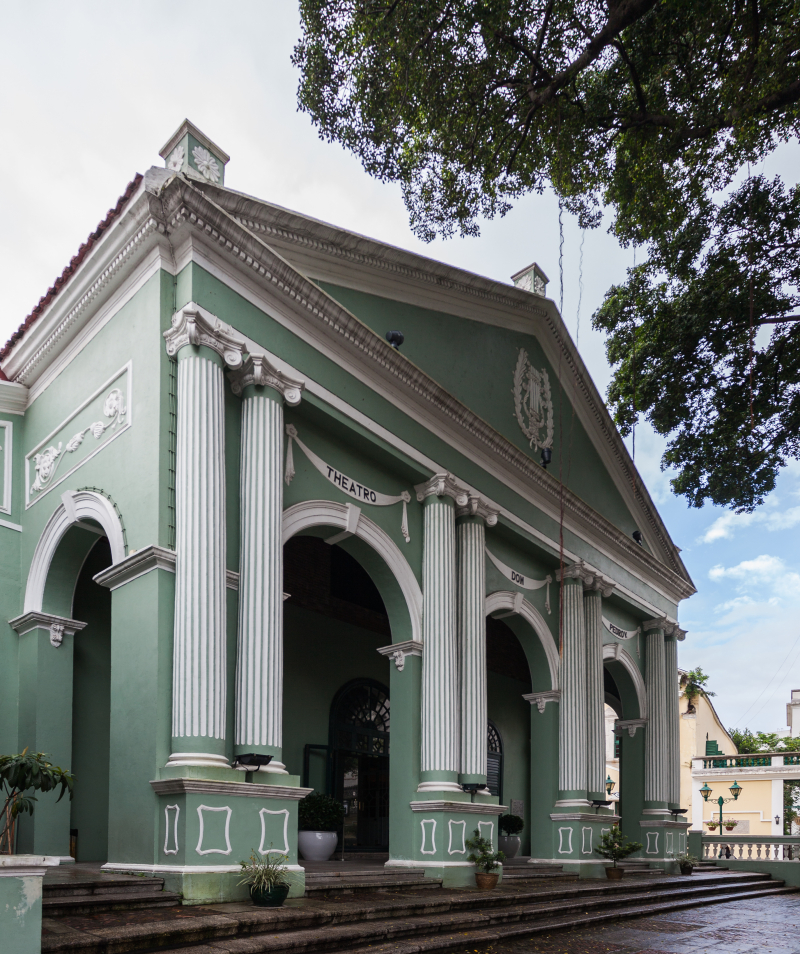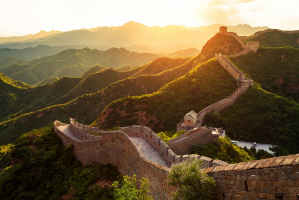Top 12 Most Beautiful Historical Sites in Macau (China)
Macau is known for many famous casinos and is a bustling city in the world. Besides, the beautiful nature combined with the unique architecture of Macau also ... read more...attracts a large number of tourists. Let's find out with Toplist about the most beautiful historical sites in Macau!
-
The first position on the list of the most beautiful historical sites in Macau is the Nezha temple. In Chinese folk religion, Nezha is a god of protection. "Marshal of the Central Altar" is his designated Taoist moniker. After becoming a divinity, he was given the moniker "Third Lotus Prince".
The oldest Buddhist and Taoist temple is called Nezha Temple, and it was established in 1888. Other names for this temple include Nazha, Nata, and Natcha. This temple uses Chinese Buddhist principles and is devoted to a Taoist god. He was given the appellation "Third Lotus Prince" after he was elevated to the status of divinity. His formal Taoist name is "Marshal of the Central Altar." The primary attractions in Macau are the little and lovely Nezha Temple.
This single-chamber, 8.4 meters long by 4.51 meters broad, ancient Chinese temple is uncomplicated. The building is gray, and the entrance gate is five meters deep. The primary Jesuit cathedral in the Macau region is the Nezha temple, which is situated behind St. Paul's Ruins. The temple is well-known for being one of the most important and historic Macau locations that have been added to the UNESCO World Heritage List.
8.4 meters (28 feet) long and 4.51 meters (14.8 feet) wide, the diminutive traditional Chinese temple is a straightforward one-chambered structure. The entrance porch leads to a temple structure that is 5 meters (16 feet) deep. With the exception of murals on the walls under the entrance porch, the structure is painted gray and has few ornaments.
Location: Santo António, Macau, China
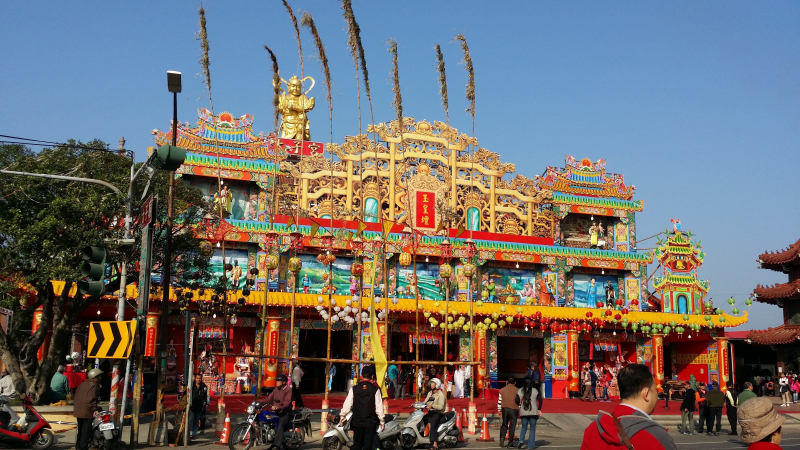
Photo: sinolit.wordpress.com 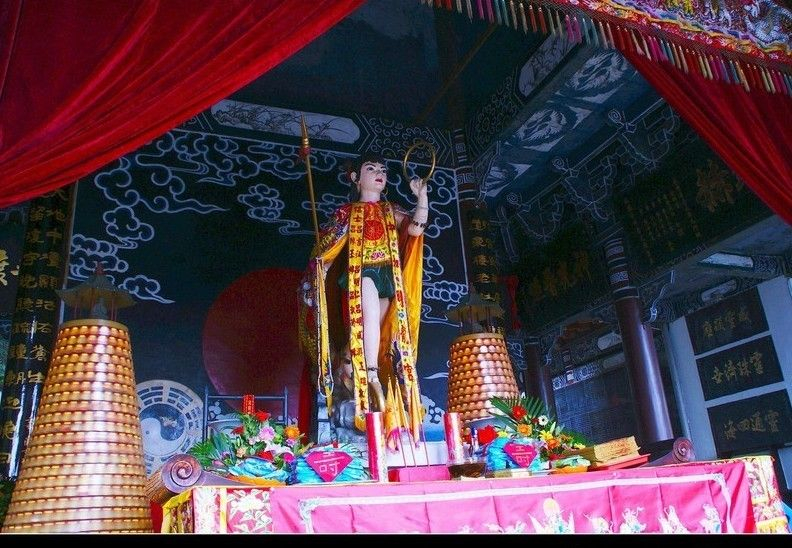
Photo: pinterest.com -
Senado Area, a public square in Macau, is a well-liked tourist destination. The fourth-largest square, Senado Square, has an area of 3,700 square meters. The square is the principal historic attraction of Macau and was added to the UNESCO World Heritage List in 2005. Because it has been in front of the Leal Senado Building since the Ming Dynasty, the square has a name (1368-1644). When the Portuguese took control of the region, this is where the local government would inspect the troops.
In the year 1940, it had a statue of a Portuguese soldier named Mesquita in the center. He was in charge of numerous Chinese troops' deaths during the Qing Dynasty battles (1644–1911). The Chinese people replaced the statue with a fountain, which became known simply as "the fountain." In the early 1990s, the administration hired numerous Portuguese specialists to pave the Senado Square with painted stones and a mosaic with a wave pattern.
Due to their long history and numerous western traits, the structures at Senado Square have been carefully conserved by the government, and no one is allowed to alter their exteriors. Around Senado Square, there are both traditional Chinese eateries and shopping malls. Senado Square is a well-known Macau destination for stylish apparel, delectable treats, and picturesque settings.
Location: Sé, Macau, China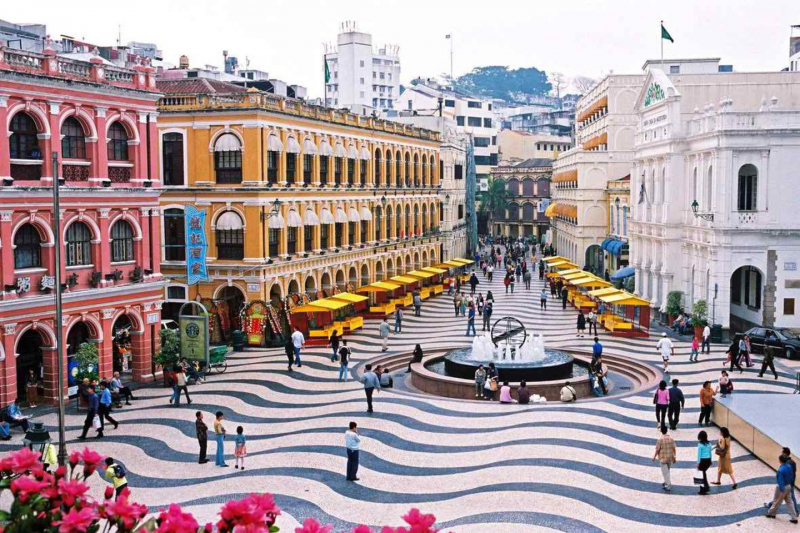
Photo: myhktour.com 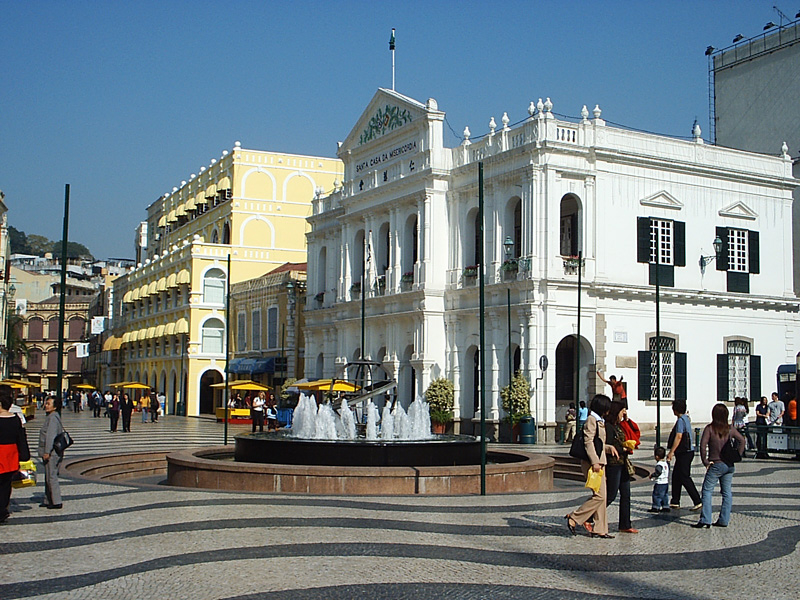
Photo: wikipedia -
One of the most beautiful historical sites in Macau is the Lou Kau Mansion. Sé, Macau, China, there is a historical home called the Lou Kau Mansion. The mansion, which was constructed in 1889, is one of the listed historical sites in Macau's Historic Centre, a UNESCO World Heritage Site.
Lou Kau, a well-known Chinese businessman, lived in the building when it was constructed in 1889. In 1992, the structure was designated as protected property and a part of Macau's historic core. The building's upkeep was initiated in 2002 by the Macau Bureau of Culture, and it was finally made accessible to the public in 2005.
Blue bricks were used to build the two-story Chinese-style Lou Kau Mansion. Three courtyards can be found in the Lou Kau House for enhanced ventilation and illumination. Visitors will find that Chinese and western architectural elements harmoniously blend within. To be more specific, the juxtaposition between the Western-style iron handrails, vibrant glass, and French doors and the Chinese-style brick carvings, wood carvings, and lime statues creates one of the most elegant and unique Macau sights.
Location: Sé, Macau, China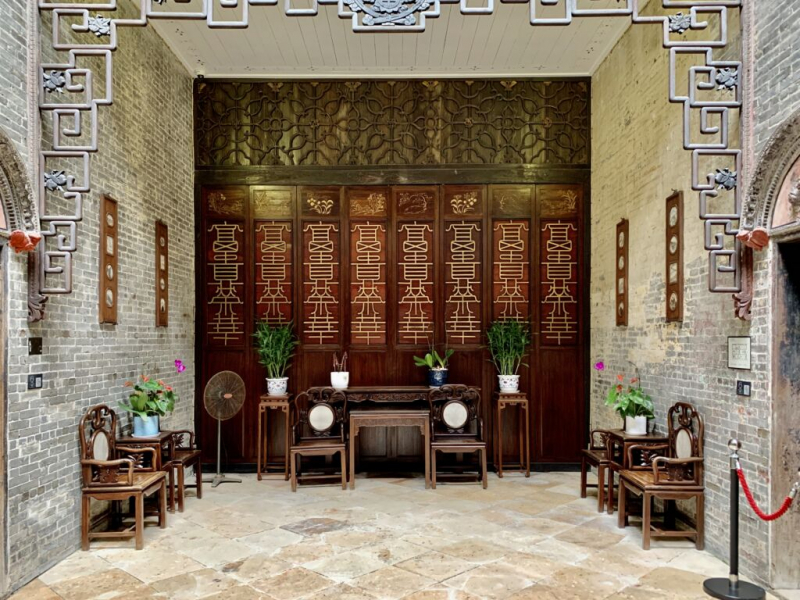
Photo: Chinatourlifestyle.com 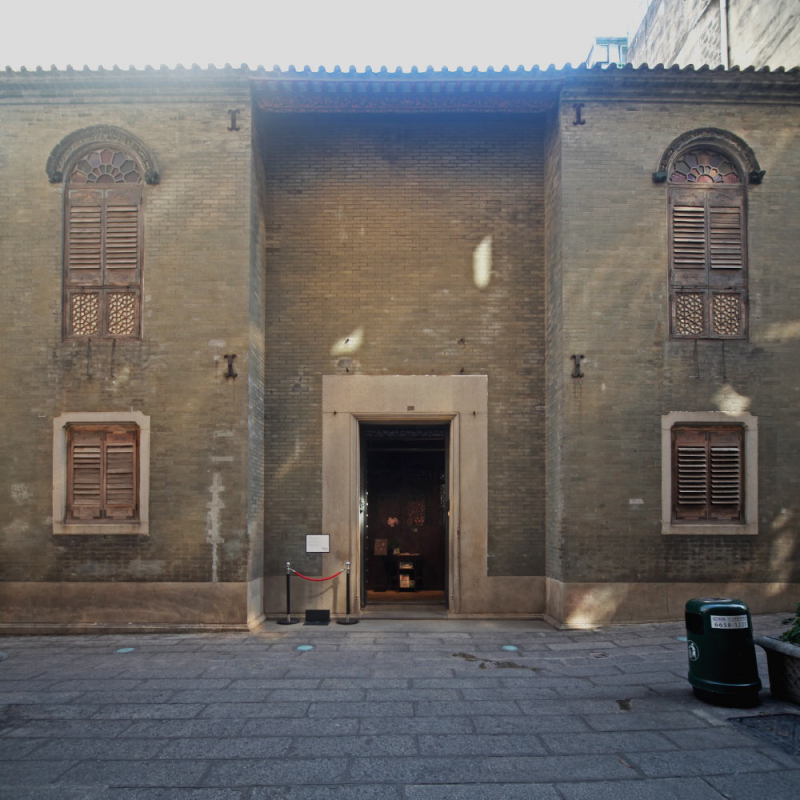
Photo: openhouse.macau -
Located in the Cathedral Parish of the Roman Catholic Diocese of Macau, Saint Dominic's Church is a late 16th-century Baroque-style church. It is located close to the Leal Senado Building in the Largo de So Domingos in the city's peninsular area. Three Spanish Dominican priests oversaw its completion in 1587. The existing building dates from the early 17th century as a result of repairs and reconstruction. It is one of the 29 locations that make up Macau's Historic Center, a UNESCO World Heritage Site.
Three Spanish Dominican priests came from Acapulco, Mexico, and founded the church in 1587. In 1644, when the Iberian Union was dissolved, it was the scene of violence when a Spanish commander who was faithful to the King of Spain and opposed the colony's decision to remain loyal to Portugal entered the church in order to seek safety from a raging mob.
The Baroque-style church of St. Dominic is renowned for incorporating both regional Macanese and European elements into its architecture. This is illustrated by the church's use of teak doors and roof tiles in the Chinese style. A statue of the Madonna and Child is the centerpiece of the church's high altar, which is surrounded by statues of various saints fashioned out of wood and ivory.
Location: Largo de São Domingos, Sé, Macau, China
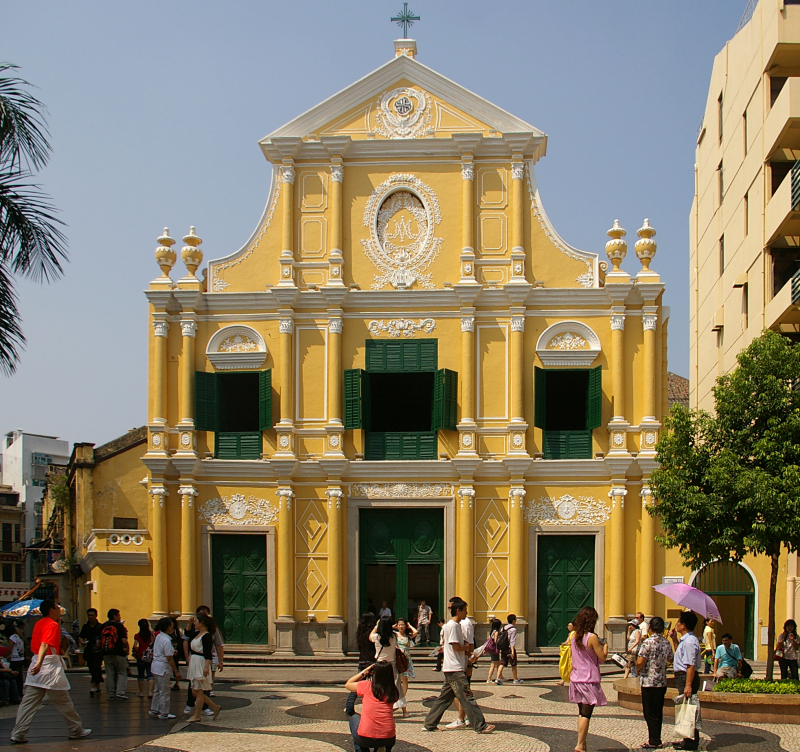
Photo: wikipedia commons 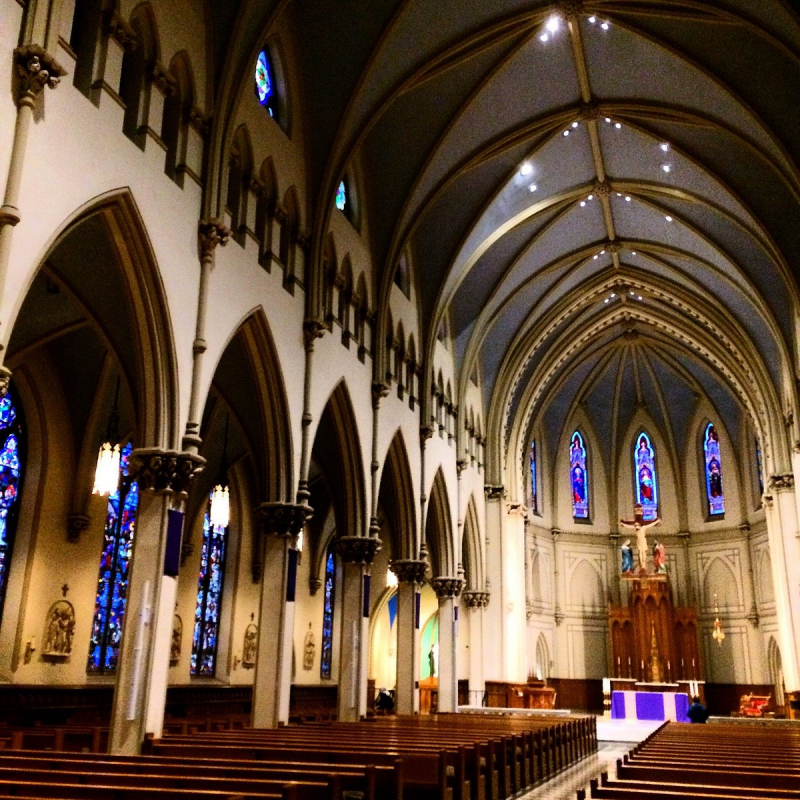
Photo: tripadvisor -
The Municipal Council of Macau is housed at the Leal Senado Building, which is in the heart of Macau and looks out over Senado Square. It is presently listed on UNESCO's World Cultural Heritage Lists as a component of Macau's Historic City. On the first floor of Leal Senado, there is an auditorium with a chapel, a public library that houses antiquated foreign publications from the 17th to the mid-20th centuries, and a house of galleries that often hosts exhibitions.
Quite a courtyard in the Portuguese style, complete with a bust of the Portuguese poet Camoes and a flower nursery shaped like a celestial globe. Every year as Christmas approaches, Leal Senado and Senado Square will be decorated with lovely lights. Leal Senado Building was built in 1784, according to our tour guide. The majority of crucial city-related decisions have been made from this location, which is still the civic chamber of Macau attractions. A greenhouse in the courtyard is one of the original features still present in the house. A lavish library and a tiny chapel are both located on the first floor of the building. A little garden and a free restroom are both located inside the structure.
Location: No. 163 Avenidade Almeida Ribeiro, Macau, China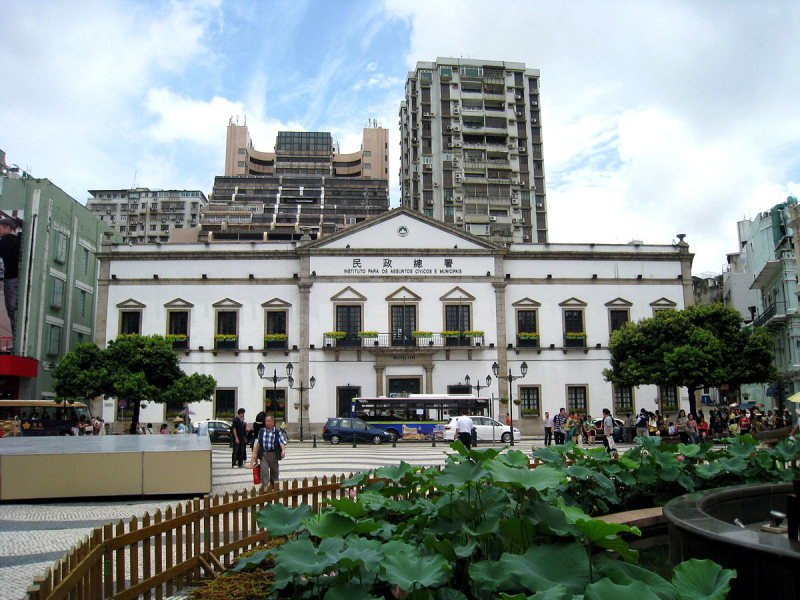
Photo: wikipedia.org 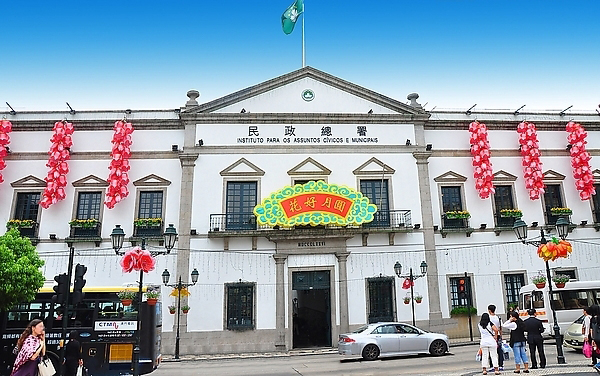
Photo: visitourchina.com -
Saint Lawrence's Church was constructed by the Jesuits in the middle of the sixteenth century. It was given its current shape and size in 1846. The chapel was given the name Feng Shun Tang because families of Portuguese sailors used to congregate on the front steps to pray and wait for their return. It is located on the southern coast of Macao, facing the sea (Hall of the Soothing Winds). The church's location in a formerly affluent neighborhood helps to explain its size and extensive use of architectural detail. Neo-classical architecture with subdued Baroque ornamental influences. Saint Lawrence's Church is one of the most beautiful historical sites in Macau
This Christian church looks impressive and serious with its golden walls and symmetrical bell towers on both sides, each housing a clock to tell the time and a bronze bell to shake and proclaim the mass. An old stone-carved cross is positioned on the tiled roof. The inside is even more stately and attractive with its substantial columns and subtle drop lighting. Along with the right-hand bible and the left-hand plate, St. Lawrence's statue is positioned on the altar. Portuguese people view St. Laurence as a sea god who guards them and lets them know which way the wind is blowing.
Location: R. de São Lourenço, Macau, China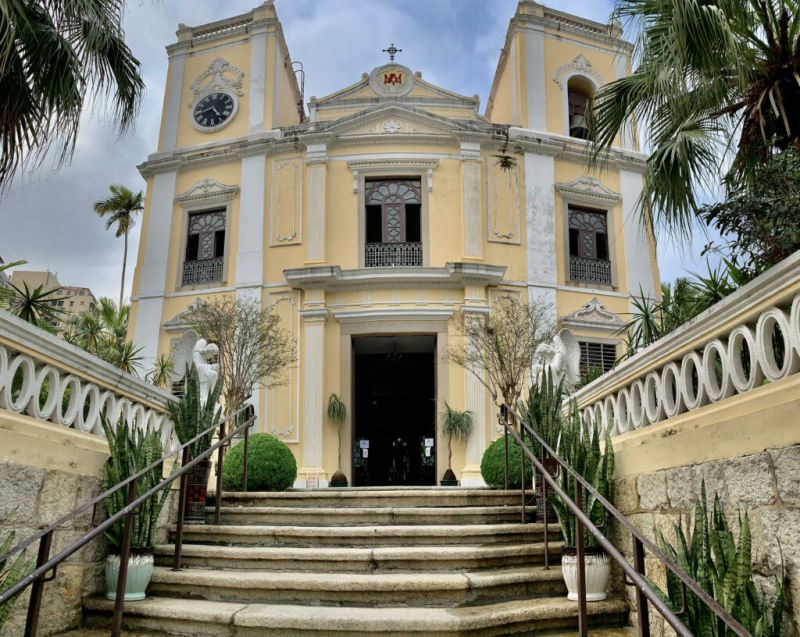
Photo: macaulifestyle.com 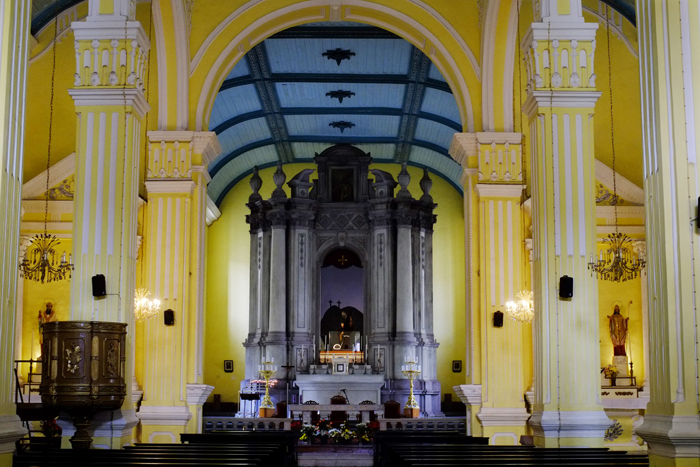
Photo: visitourchina.com -
In Taipa, Macau, China, a collection of historic homes serves as home to the Taipa Houses-Museum. Due to land reclamation in the Cotai area between Taipa and Coloane, the homes no longer have a view of the sea. This body of water has evolved into a tiny wetland. The Cultural Affairs Bureau hosts the Lusofonia Festival in the open area outside the museums every autumn.
Five homes make up the museum complex, four of which are used to exhibit various artifacts and exhibits on colonial life in Macau while the fifth one is used as a venue for events. The residences were erected in 1921. In order to replicate the homes of prosperous Portuguese families who lived in Macau during the first half of the 20th century, these colonial homes were reconstructed. 1999 saw the restoration of the final home. The Macau Civil and Municipal Affairs Bureau is in charge of running the Taipa Houses-Museum, which debuted on 5 December 1999.
The first level is an exhibition area where works by exceptional local and international artists are displayed and sold, while the ground floor is a bookstore that mostly sells books on humanities, social sciences, art design, and local publications. Visitors are drawn to this museum, which is included under Macau attractions.
Location: Estr. de Cacilhas, Macau, China
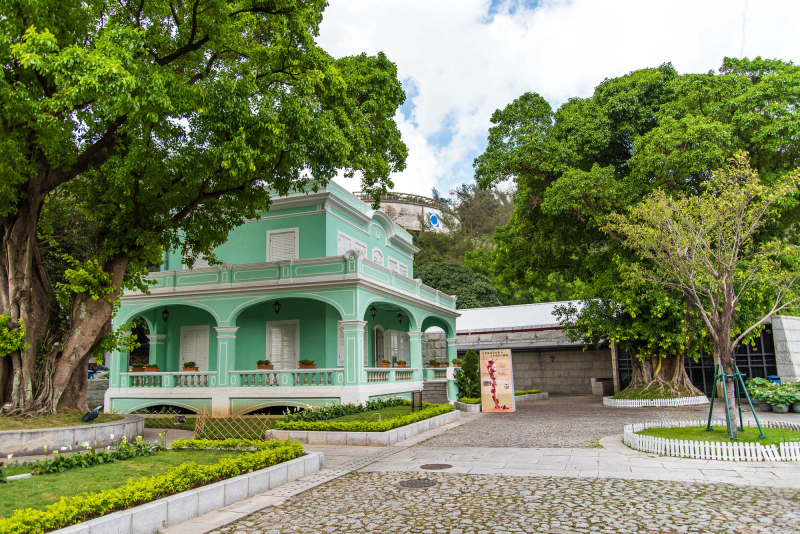
Photo: taipavillagemacau.com 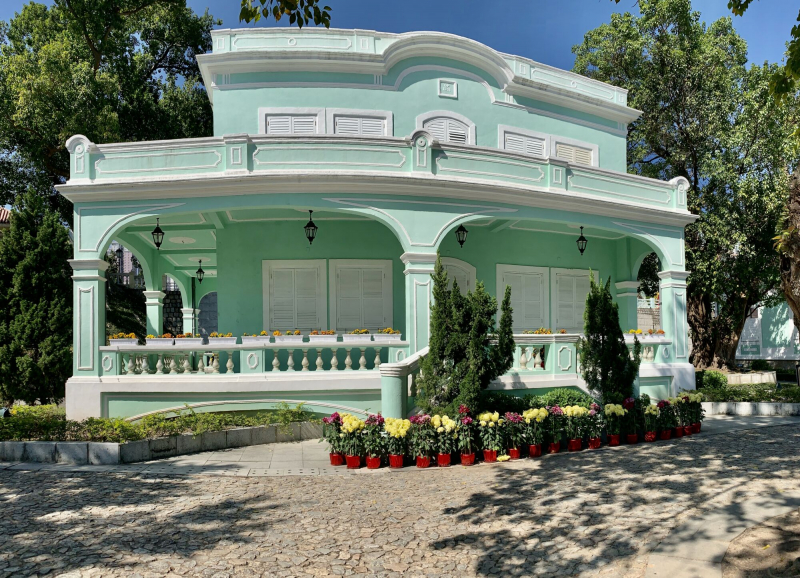
Photo: macaulifestyle.com -
The Moorish Barracks were initially used as the barracks for Indian soldiers sent from Goa to Macau. The structure itself is a magnificent work of architecture. The home has a blend of Arab and Gothic architectural styles, with the latter predominating, as opposed to the typically visible European architecture on Avenida de Almeida Ribeiro. Since the 19th century, it has served as the Macau Port Authority's administrative center.
Italian architect Cassuto was selected to design this stunning structure. The most beautiful feature of the building with an Islamic tint is the long veranda, which has energizing columns and windows. The pointed arches in between the ivory yellow pillars draw the eyes away from the floral barriers. It is a recognized component of 2005 the World Heritage List-designated Historic City of Macau and Macau Attractions. It measures 37 meters broad and 67.5 meters long.
It is in the middle two-story and the remaining one-story portion of it, standing on a granite platform above the road. A four-meter-wide veranda connects the house to its three sides. The charming meandering corridor, which is framed by pillars and has pointed arches, allows people to stroll while taking in the surrounding countryside. The entire structure is painted a light yellow color and decorated with white flower patterns, with the exception of the granite pedestals on the street level, giving it a sense of beauty and elegance.
Location: 1 Calçada da Barra, Macau, China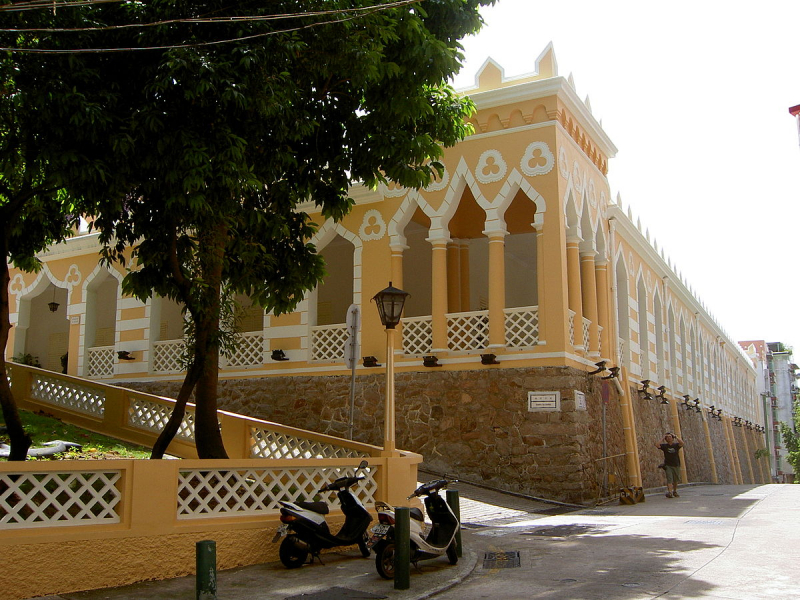
Photo: wikipedia 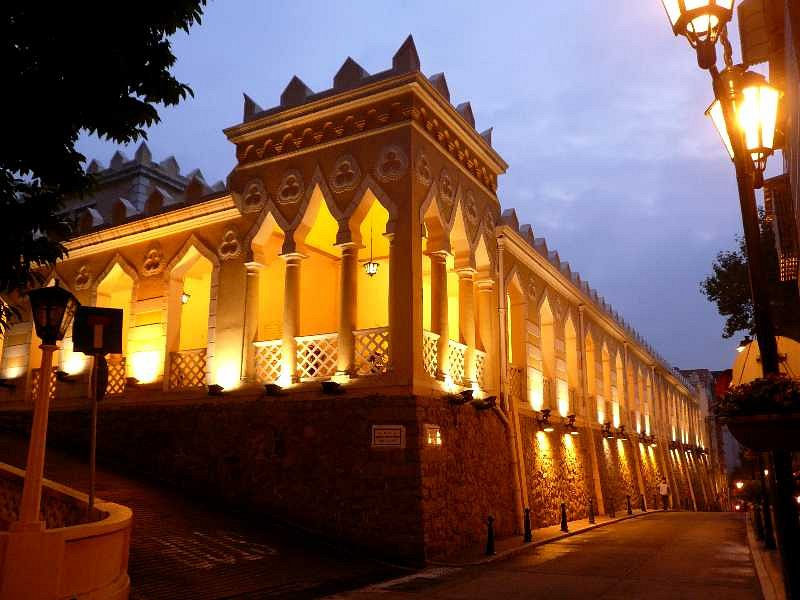
Photo: tripadvisor -
East of Saint Paul's Ruins, on the 52-meter-tall Mount Hill, Mount Fortress was constructed between 1617 and 1626. It was built to safeguard the Jesuits' (mostly Portuguese Jesuits') property in Macau, particularly from pirates. Later, the fort was taken over by the competent authorities and the Portuguese colonial governor for the defense of Macau.
The fort takes up about 8,000 square meters of space. The fort's perimeter was surrounded by 32 muzzle-loading cannons, and it has modest watchtowers at each of its two southeasterly corner locations. In order to successfully thwart the attempted Dutch invasion of Macau in 1622, the fort was essential.
Up until 1965, the fort was a restricted military location. Then, the fort's barracks were turned into a weather observatory, and it was made public. The observatory stopped operating in 1996, was moved to Taipa, and then was destroyed to make room for the Museum of Macau, which became operational on April 19, 1998. A panoramic view of Macau's mainland is available from the park covered in trees at the summit of the fort.
Location: Santo António, Macau, China
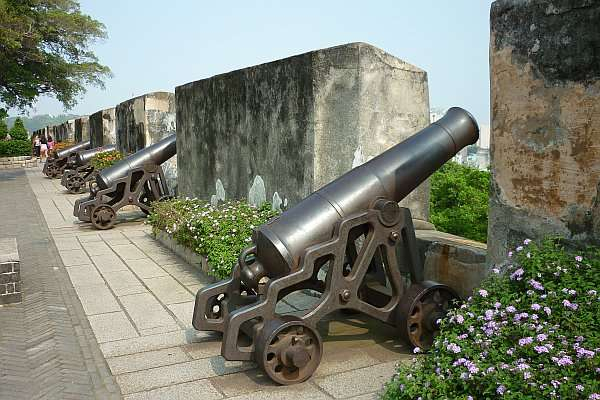
Photo: Macaulifestyle.com 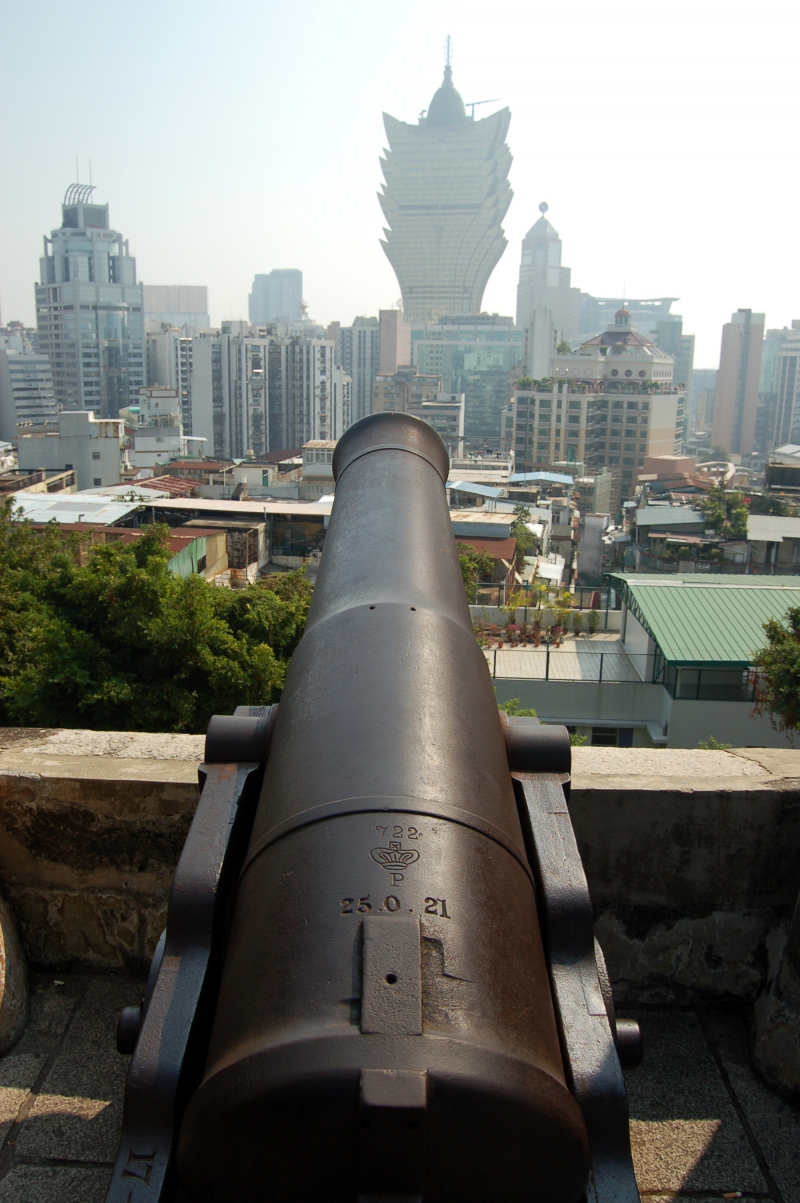
Photo: wikimedia commons -
In Santo António, Macau, China, there are ruins of a 17th-century Catholic religious complex known as Saint Paul's. They consist of what was once St. Paul's College and the 17th-century Portuguese church known as "Mater Dei," the Church of St. Paul, which is dedicated to Saint Paul the Apostle. As one of the Seven Wonders of Portuguese Origin in the World, the ruins are today a well-known monument in Macau. They were formally included in the Historic Centre of Macau's UNESCO World Heritage Site in 2005.
The Jesuits constructed the church, which at the time was one of the biggest Catholic churches in Asia, between 1602 and 1640. The structure's fortunes also declined as Macau's prominence waned and Hong Kong replaced it as the primary port for the Pearl River Delta. On January 26, 1835, a fire during a typhoon caused the building to be completely destroyed. The ruin is seen from the Fortaleza do Monte. This might have happened because Francesco Melzi showed Carlo Spinola the codex in Milan or because Giacomo della Porta, the architect who created the façade of the Church of the Gesù in Rome, did.
Location: Santo António, Macau, China
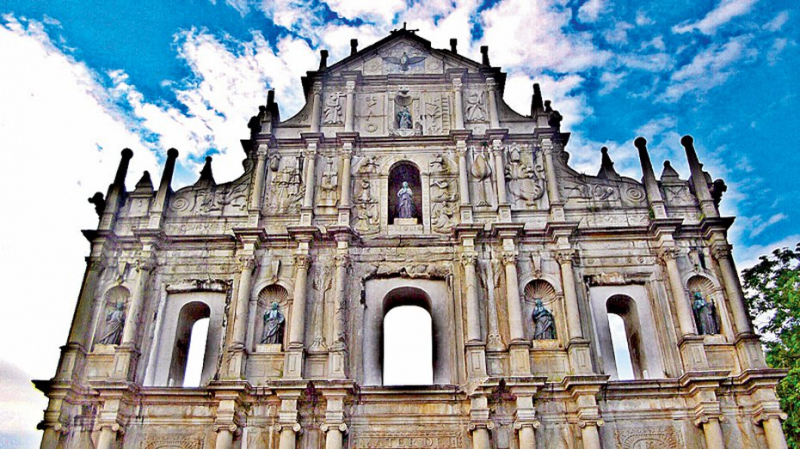
Photo: myhktour.com 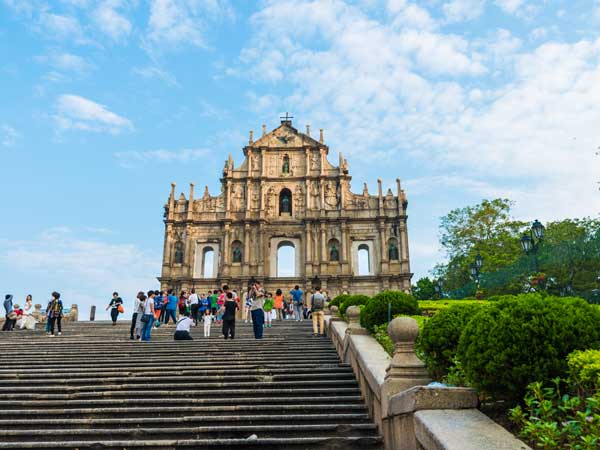
Photo: topchinatravel.com -
The next position on the list of the most beautiful historical sites in Macau is the A-Ma temple. In So Lourenço, Macau, China, there is a shrine dedicated to the Chinese sea goddess Mazu called the A-Ma Temple. One of Macau's oldest temples, built-in 1488, is assumed to be the settlement's namesake.
It was believed that the name of the temple was the source of the name Macau. According to legend, the locals responded Maa-gok or A-maa-gok when the Portuguese sailors inquired about the location after arriving at the coast near the temple. Later, the Portuguese gave the peninsula the name "Macau." The temple was well described in ancient Chinese writings and depicted in Macao-related paintings. It is also among the earliest Macao scenes to be captured on camera.
Every year, on the days of Mazu's birthday and the Chinese New Year, a large number of male and female devotees congregate here. They burn a lot of incense to offer homage and make good luck wishes. The temple was included in the Historic Centre of Macau, a UNESCO World Heritage Site, in 2005.
Location: São Lourenço, Macau, China
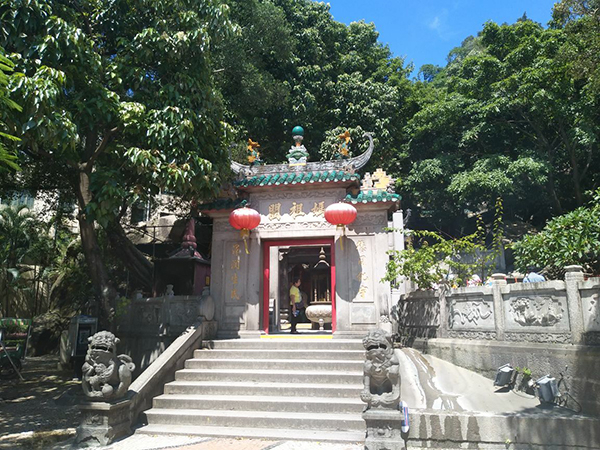
Photo: topchinatravel.com 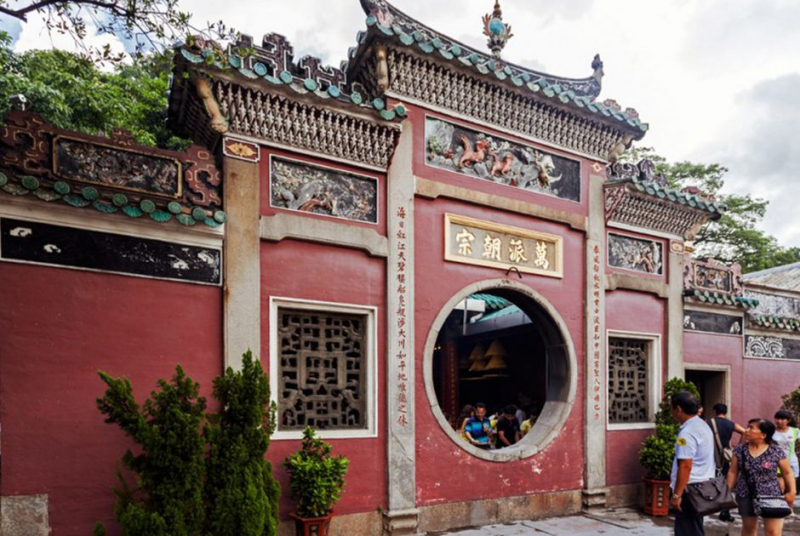
Photo: yeudulich.com -
Largo de Santo Agostinho in So Lourenço, Macau, China, is the location of the famous Dom Pedro V Theatre. One of the first theaters built in a Western design in East Asia. Even now, significant public events and festivities continue to take place in the theater, a significant landmark in the area.
To honor their reigning monarch, Peter V, the local Portuguese built the theater in 1860. It used to be a frequent gathering spot for the Macau-dwelling Portuguese and Macanese. In 1873, it received its current façade. During World War II, the theater served as a haven. The theater was added to the UNESCO World Heritage List in 2005 as one of the designated sites of Macau's Historic Center. Typhoon Hato in August 2017 caused damage to the theater's portico ceiling.
The theater has a rectilinear, neo-classical form that includes a portico front. The structure is 22 meters broad and 41.5 meters long. It has a ballroom, a study, and a space for a pool in addition to being a theater. In the year 2005, UNESCO included it as a component of Macau's historical center under Macau attractions in the World Cultural Heritage.
Location: Largo de Santo Agostinho, Macau, China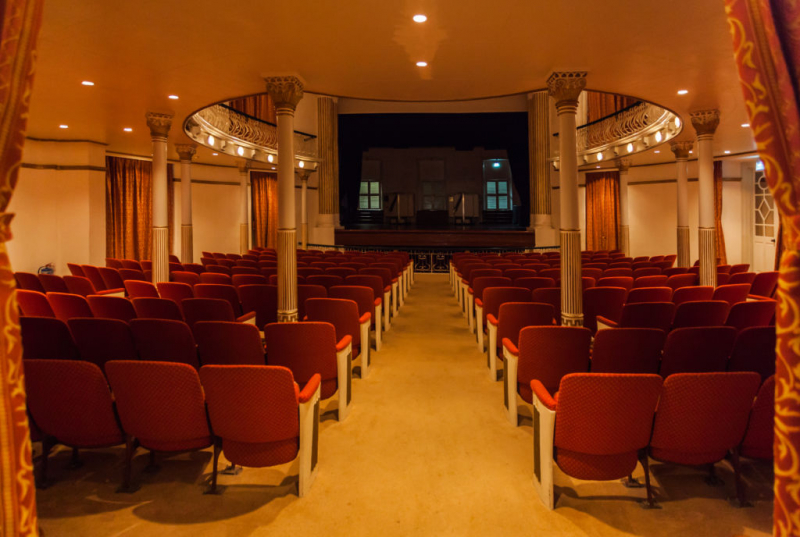
Photo: macaulifestyle.com 